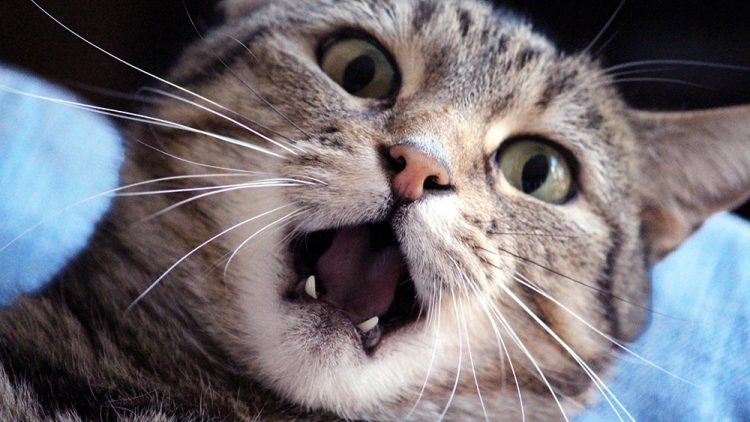As many as 4 in 5 cats have developed some form of gum disease by their fourth birthday. Arming yourself with knowledge, tooth-brushing skills, and the best cat toothpaste is your best hope of preventing gum disease.
According to a recent survey, 73% of cat owners say they never brush their cat’s teeth. With so few cat owners appreciating the importance of dental care as part of a daily grooming schedule, it’s no surprise gum disease statistics are so shocking.
This article takes a look what Gingivitis and Periodontitis are, the relationship between them, and how best to manage and prevent them.
Gingivitis in Cats
Gingivitis in cats is a medical condition that is indicated by an inflammation of the gums. In the early stages, you’ll be able to notice a redness on the gums, usually close to the tooth.
Bad breath and plaque buildup are also common indicators of a Gingivitis flare up, so if your cat is exhibiting these symptoms be sure to get them checked out as soon as possible.
What causes Gingivitis in Cats?
A build up of plaque on teeth is usually what leads to Gingivitis. Plaque build up on teeth is often referred to as a biofilm.
When bacteria reaches the small pocket between the gum and the tooth, it causes a bacterial infection which in turn leads to inflammation and redness. The redness can range from a thin red line at the margin of the gums, to extended redness right the way up the gum depending on the severity of the infection. Inflamed gums may bleed when you brush your cat’s teeth.
Senior cats, cats with crowded teeth, cats with bad oral hygiene, and cats fed primarily soft foods are all especially susceptible to Gingivitis.
How can Gingivitis in Cats be prevented?
Just as with humans, Gingivitis can be prevented with proper dental care. Yearly professional dental cleaning from your vet coupled with brushing your cat’s teeth regularly at home is the best defense again Gingivitis.
Make use of cat toothpastes that break down bacteria before it can cause problems, and be sure to get any inflammation checked out as soon as possible. It’s that simple!
Periodontitis in Cats
Periodontitis in cats refers to inflammation of the bone and tooth support structures. It’s caused by a cycle of damage brought on by plaque forming under the gum-line.
Bacteria trapped under the gum-line secrete toxins that damage the bone and tooth support structure. This causes an immune response, which leads to floods of white blood cells being sent to the infection site with the hope of containing and controlling the infection.
In cases where there is severe plaque and tartar build up, the white blood cells are defeated. When overwhelmed, white blood cells release chemicals that cause even more damage to the surrounding tissue. Instead of helping, the situation worsens.
When Periodontitis is in it’s worst stages, the gums may recede and reveal the roots of tooth.
Periodontal Disease in Cats

Periodontal disease includes both Gingivitis (gums) and Periodontitis (tooth support structure). Given the varying nature of its appearance depending on severity, it often cannot be properly diagnosed without the cat being under general anesthetic. It poses a significant risk to your cat’s health.
X-rays are required to fully evaluate the extent of the problem. These will reveal a loss of density in the root socket, and in later stages show the damage to the bone support around the tooth.
Treating Periodontal Disease in Cats
In its early stages, prescription cat toothpastes used at home along with regular professional cleaning can minimize the damage caused by Periodontal disease.
Treatment for the more advanced stages of Periodontal disease requires deep dental cleaning under anesthesia, and commonly the extraction of the affected teeth.
Post-treatment, cats require regular checkups and a good dental hygiene routine to ensure the infection does not continue to spread.
Did you find this article helpful?
